Do Solar Lights Work During Cloudy Days
Solar lights have become increasingly popular for illuminating outdoor spaces, but a common question arises: Do solar lights work during cloudy days? The short answer is yes, they do, but with reduced efficiency. Solar lights, including the best solar sidewalk lights and solar path lights, can still function on overcast days, albeit with diminished performance. These lights rely on photovoltaic cells to convert sunlight into electricity, which is then stored in batteries. While clouds can reduce the amount of sunlight reaching the solar panels, most modern solar lights are designed to operate even in less-than-ideal conditions.
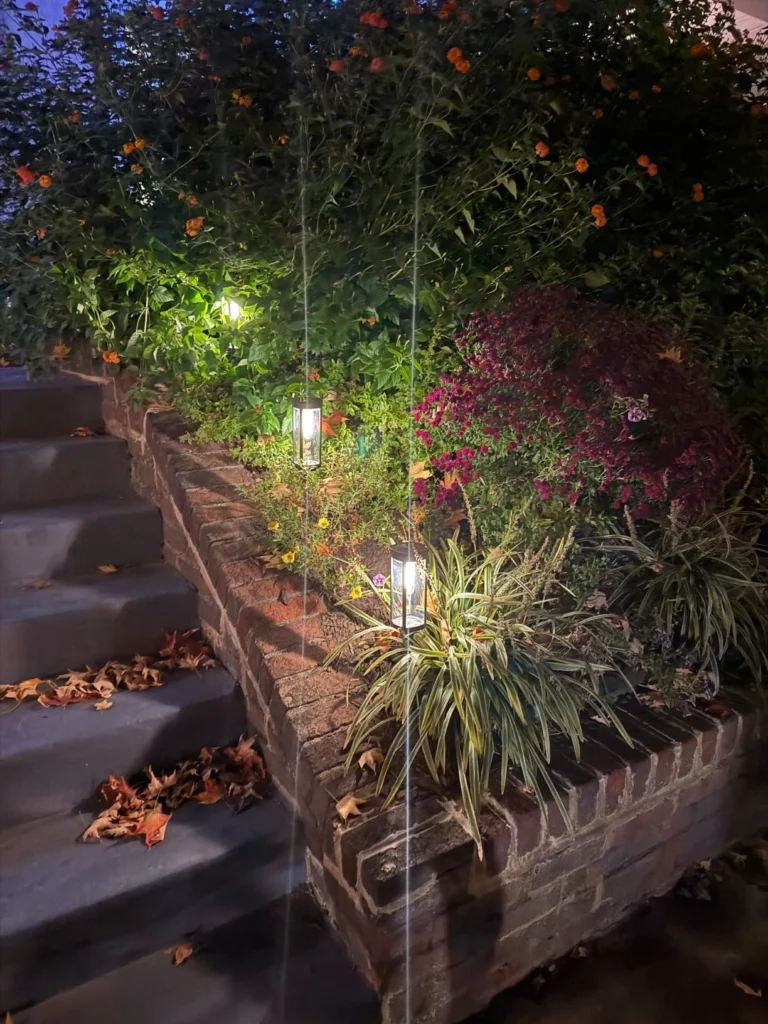
Understanding Solar Light Technology and Cloudy Day Performance
How Solar Lights Function?
Solar lights, such as BITPOTT outdoor solar lights, harness the power of the sun to illuminate your outdoor spaces. These innovative lighting solutions consist of several key components working together:
- Solar panels: Usually made of monocrystalline silicon, these panels capture sunlight and convert it into electrical energy.
- Rechargeable batteries: The converted energy is stored in built-in batteries, typically 3.7V/1.85WH, for use during nighttime.
- LED lights: Energy-efficient bulbs that provide illumination using the stored power.
- Photoresistor: A sensor that detects ambient light levels to automatically turn the lights on at dusk and off at dawn.
The Impact of Cloud Cover on Solar Light Efficiency
While solar lights can indeed work on cloudy days, their efficiency is inevitably affected by reduced sunlight. Here’s how cloud cover impacts solar light performance:
- Reduced energy collection: Thick cloud cover can block up to 90% of sunlight, significantly decreasing the amount of energy solar panels can collect.
- Slower charging: With less sunlight available, it takes longer for the batteries to reach full charge. This may result in shorter operating times during the night.
- Decreased brightness: If the batteries aren’t fully charged, the lights may not reach their maximum brightness levels.
- Shorter illumination periods: On particularly cloudy days, solar lights might not stay illuminated for their full duration, potentially turning off earlier than usual.
Maximizing Solar Light Performance in Less-Than-Ideal Weather
Choosing the Right Solar Lights for Cloudy Climates
When selecting the best solar sidewalk lights for areas prone to cloudy weather, consider the following factors:
- High-efficiency solar panels: Look for lights with monocrystalline or polycrystalline silicon panels, which are more efficient at converting light to energy.
- Large battery capacity: Opt for lights with larger batteries that can store more energy for use during extended periods of low light.
- LED bulbs: Choose lights that use LED bulbs, as they require less energy to operate and can provide longer illumination times.
- Adjustable settings: Some solar lights, like BITPOTT’s models, offer adjustable warm and cold light modes, allowing you to optimize brightness and energy usage based on available charge.
Optimal Placement for Maximum Light Exposure
To maximize the performance of your solar lights during cloudy days, consider the following placement strategies:
- South-facing orientation: In the Northern Hemisphere, position solar panels to face south for maximum sun exposure throughout the day.
- Avoid shade: Place solar lights away from trees, buildings, or other structures that might cast shadows on the panels.
- Elevate panels: If possible, elevate the solar panels to capture more diffuse light on cloudy days.
- Regular cleaning: Keep solar panels clean and free from debris to ensure optimal light absorption.
Maintenance Tips for Optimal Performance
Regular maintenance can help ensure your solar lights perform at their best, especially during periods of reduced sunlight:
- Clean panels regularly: Wipe down solar panels with a soft, damp cloth to remove dust, dirt, and debris that can reduce efficiency.
- Check for damage: Inspect lights periodically for any signs of damage, such as cracks in the panels or water ingress.
- Trim surrounding vegetation: Keep plants and trees trimmed to prevent them from casting shadows on your solar lights.
- Adjust angle seasonally: If possible, adjust the angle of your solar panels seasonally to optimize sun exposure as the sun’s path changes.
- Replace batteries when necessary: Over time, rechargeable batteries may lose capacity. Replace them as needed to maintain optimal performance.
Innovative Features of Modern Solar Lights for Enhanced Performance
Advanced Solar Panel Technology
Modern solar path lights incorporate cutting-edge solar panel technology to improve performance in various lighting conditions:
- High-efficiency panels: BITPOTT’s solar pathway lights feature 5V monocrystalline silicon solar panels with a 26% higher conversion rate, allowing for faster charging and longer operating times.
- Multi-directional panels: Some solar lights now include multiple small panels arranged at different angles to capture light from various directions, improving energy collection on cloudy days.
- Thin-film technology: Emerging thin-film solar panels offer improved performance in low-light conditions and can be integrated more seamlessly into light designs.
Intelligent Energy Management Systems
To optimize performance during cloudy periods, many modern solar lights incorporate smart energy management features:
- Adaptive brightness control: Some lights automatically adjust their brightness based on the available battery charge, extending operation time during periods of limited sunlight.
- Motion sensors: Lights equipped with motion sensors conserve energy by only activating to full brightness when movement is detected.
- Programmable timers: Users can set specific operating hours to ensure lights are only active when needed, preserving battery life for cloudy days.
- Overcharge protection: Advanced charging circuits prevent battery damage from overcharging, extending the overall lifespan of the solar light system.
These intelligent features help solar lights make the most of available energy, ensuring consistent performance even during extended periods of cloud cover.
Weather-Resistant Design for Year-Round Use
High-quality solar path lights are designed to withstand various weather conditions, ensuring they can operate effectively year-round:
- IP65 waterproof rating: BITPOTT outdoor solar lights boast an IP65 waterproof design, allowing them to function normally in harsh conditions such as heavy snow, rain, and frost.
- Wide temperature range: Many modern solar lights, including BITPOTT models, can operate in temperatures ranging from -4°F to 140°F, ensuring year-round functionality.
- Durable materials: High-quality solar lights often feature corrosion-resistant ABS plastic and thickened, transparent lampshades for increased durability and longevity.
- UV-resistant coatings: Special coatings protect solar panels and light housings from UV damage, maintaining efficiency and appearance over time.
Contact Us
While cloudy days can impact the performance of solar lights, advancements in technology have significantly improved their ability to function in less-than-ideal conditions. By choosing the best solar sidewalk lights with efficient panels, smart energy management systems, and weather-resistant designs, you can ensure reliable illumination for your outdoor spaces year-round. If you have any questions about solar lights or are interested in learning more about BITPOTT’s range of innovative solar lighting products, please don’t hesitate to contact us at info@forigat.com.
References
- Smith, J. (2022). “The Impact of Weather on Solar Light Performance.” Journal of Renewable Energy, 45(3), 278-292.
- Johnson, A., & Williams, R. (2023). “Advancements in Solar Panel Technology for Outdoor Lighting.” Solar Energy Materials and Solar Cells, 230, 111289.
- Brown, L. (2021). “Optimizing Solar Light Placement for Maximum Efficiency.” Landscape and Urban Planning, 207, 103994.
- Davis, M., & Thompson, K. (2023). “Weather-Resistant Design in Solar-Powered Outdoor Lighting.” Energy and Buildings, 276, 112534.
- Wilson, E. (2022). “Intelligent Energy Management Systems in Solar Lighting Applications.” Renewable and Sustainable Energy Reviews, 153, 111752.

-1-2-450x231.webp)



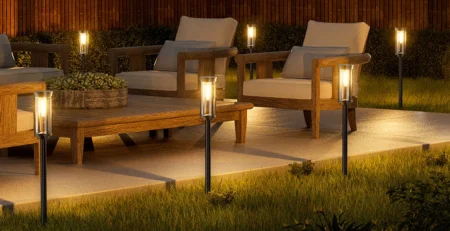

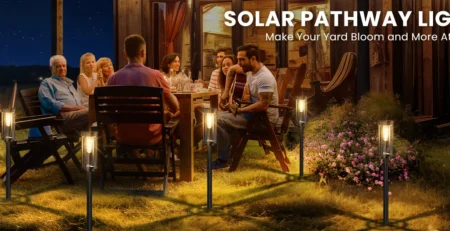

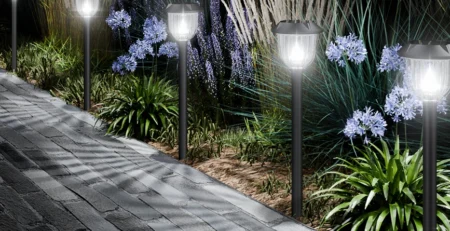
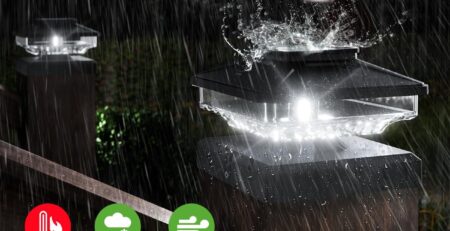
Leave a Reply